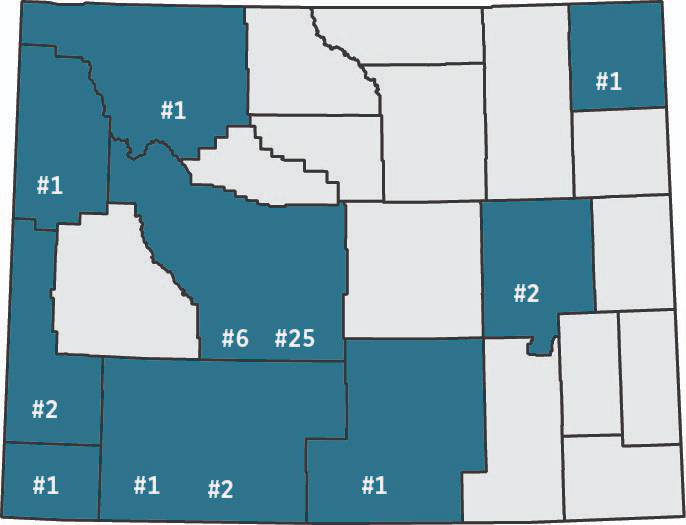School Districts That Participated
2021-22
Crook #1
Lincoln #2
Park #1
Sweetwater #2
Teton #1
Uinta #1
2022-23
Converse #2
Fremont #6
Fremont #25
Sweetwater #1
2023-24
Carbon#1

AEM Trainings
Presenter: Shelby Kappler, Assistive Technology Program Specialist and AEM Project
Coordinator
The Wyoming Accessible Educational Materials (AEM) Clearinghouse training series explained
how to ensure your classroom is as accessible as possible, from Universal Design for
Learning to creating accessible documents and inclusive project-based learning!
View recorded sessions below:
- Oct. 29: Intro to Accessible Educational Materials (AEM)
- Nov. 12: Universal Design for Learning (UDL) and the Importance of Access for All Student
- Nov. 19: Creating Accessible Documents and Presentations
- Dec. 3: Ensuring Teacher-Made Materials are Accessible
- Dec. 10: Accessibility in Project-Based Learning
PowerPoints Used in Sessions:
- Oct. 29: Intro to Accessible Educational Materials (AEM)
- Nov. 12: Universal Design for Learning (UDL) and the Importance of Access for All Student
- Nov. 19: Creating Accessible Documents and Presentations
- Dec. 3: Ensuring Teacher-Made Materials are Accessible
- Dec. 10: Accessibility in Project-Based Learning
If you have any questions, please contact the training instructor and AEM Project Coordinator Shelby Kappler at skapple1@uwyo.edu.
Presenter: Shelby Kappler, Assistive Technology Program Specialist and AEM Project
Coordinator
You've heard the term "Accessible Educational Materials" or seen the acronym "AEM",
but what exactly are accessible materials? Which students need them, and are you required
to provide them? Learn the basics of AEM.
Presenter: Shelby Kappler, Assistive Technology Program Specialist and AEM Project
Coordinator
After you've learned the basics of AEM, it's time to put it into practice! You will
learn about several tools and strategies you can start using now to determine what
AEM might be best for your students. Learn how to write AEM into an IEP, how to implement
the AEM, and how to maintain success as your students grow.
Presenter: Rachel Kruzel, ATP, Higher Education Specialist
Equatio allows students to read and write digital math equations in an accessible
format.
Presenter: Adele Smolansky, Founder and CEO
AI Learners is a platform that can be used to help students with disabilities learn.
AI Learners uses games and analytics to help kids engage with math.
Presenter: Leslie Weilbacher, Outreach N.W. Region APH
American Printing House for the Blind (APH) Solutions for Science. In this session,
explore APH products that support students who are blind or visually impaired to fully
access science class. A focus on earth science, chemistry, and biology followed by
an overview of other products for a wide grade and topic range, with time for questions.
Presenter: Shelby Kappler, Assistive Technology Specialist
The universal Protocol for Accommodations in Reading (uPAR) tool can help determine
the best alternate formats for your struggling readers. See how the uPAR aids educators
in choosing appropriate reading accommodations, and tracks reading progress over time.
In addition, the Wyoming AEM Clearinghouse has uPAR seats available to Wyoming educators
to try for free!
AEM for Math and Science PowerPoint
AEM for Math and Science Transcripts
AEM for Math and Science Recorded Presentation
Presenters:
Shelby Kappler, Assistive Technology Specialist, Wyoming AEM Clearinghouse and Michael
Graham, Occupational Therapy Fieldwork Student
Accessible Educational Materials (AEM) supports the success of students with print
disabilities. These are students who might experience visual impairments, physical
impairments, or reading disabilities. Sometimes the solutions are straightforward,
but in certain areas, such as math and science, the situation can be more complex.
One example of this is the conversion of a complex math equation into an audio format.
View the recorded presentation and learn about strategies to help K-12 students with
print disabilities succeed in math and science. Topics will include accessible teaching
strategies, easy lab accommodations, talking calculators that provide haptic feedback,
and tactile DNA models.
AEM for Extended Standards PowerPoint
AEM for Extended Standards Transcripts
AEM for Extended Standards Recorded Presentation
Presenters:
Shelby Kappler, Assistive Technology Specialist, Wyoming AEM Clearinghouse and Michael
Graham, Occupational Therapy Fieldwork Student
The Extended Standards were created by the Wyoming State Board of Education to "allow
students with the most significant cognitive disabilities to achieve high academic
expectations and to access the general academic curriculum."
View the recorded presentation to learn how Accessible Educational Materials can help
K-12 students working toward Extended Standards. This training will highlight frameworks
for assessing need as well as evaluative strategies to see if accessible materials
and tools are working.

